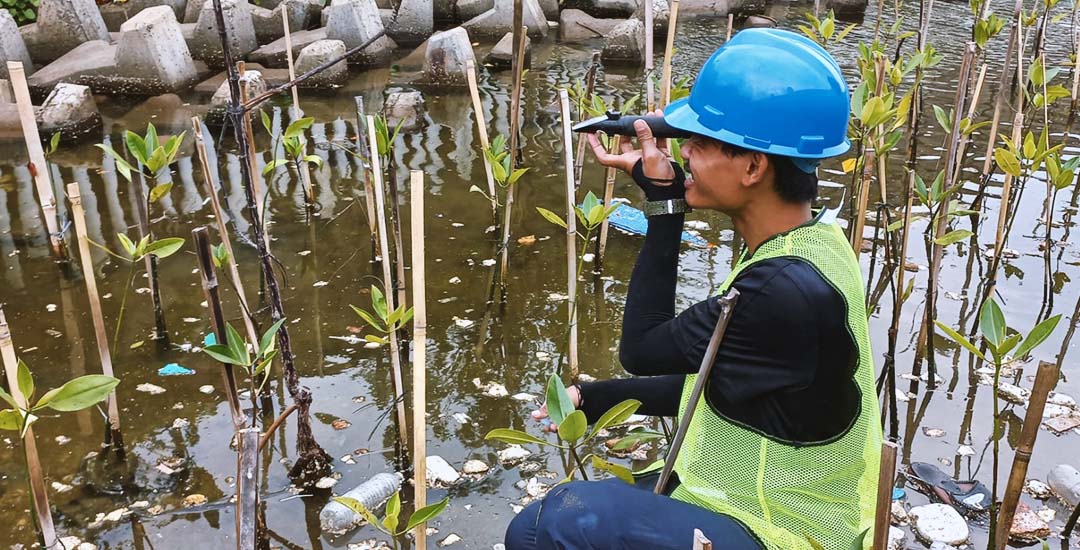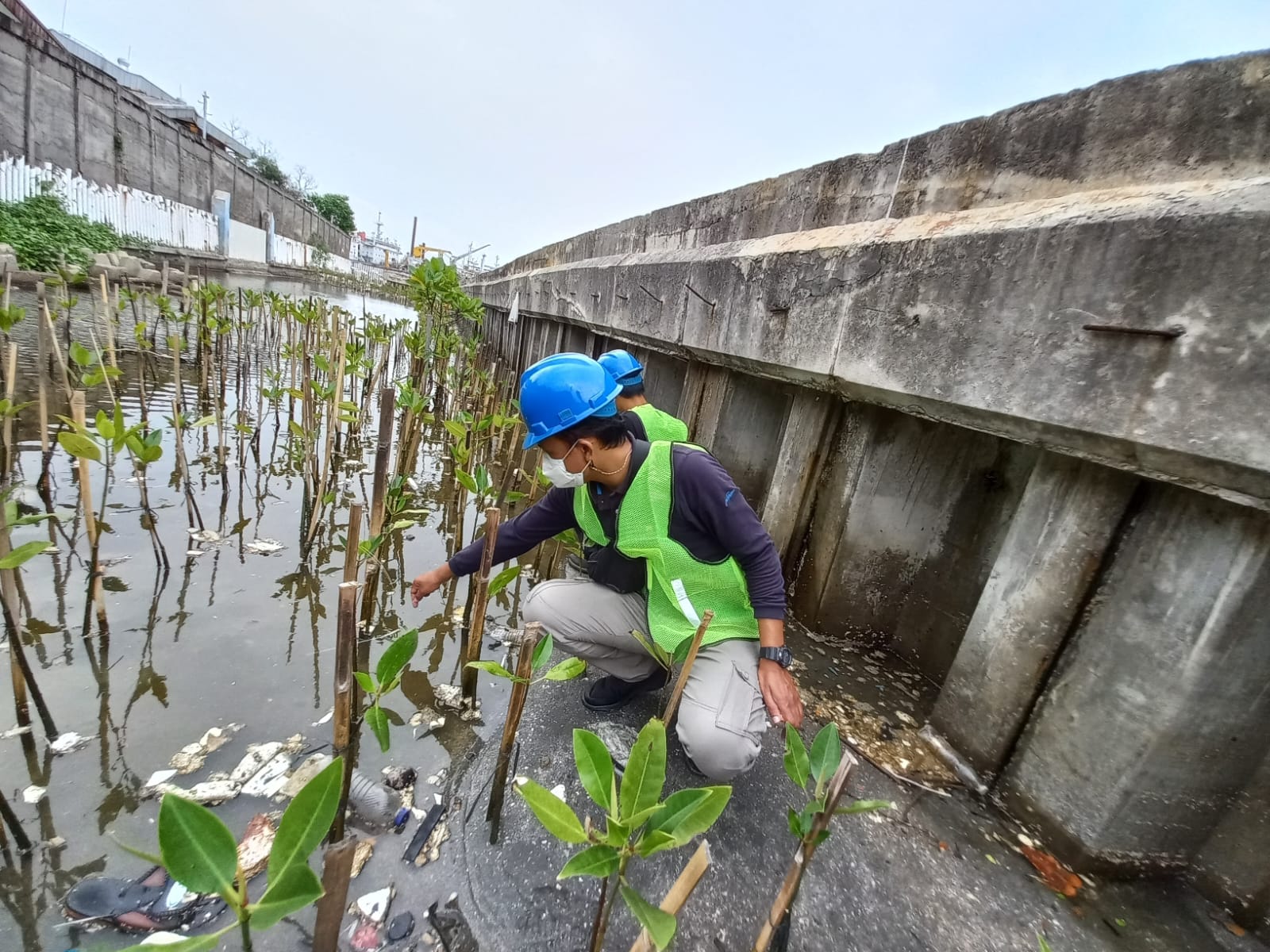
Envidata Explores Mangrove Ecosystem of PLN Indonesia Power UBP Priok
EnvidataID, Jakarta – In order to support environmental conservation efforts and climate change mitigation, PT Envidata Inovasi Indonesia (EnvidataID) has conducted a comprehensive study on the mangrove ecosystem in the coastal area of PLN Indonesia Power UBP Priok. Through a series of analyses, the research team from EnvidataID managed to collect accurate data on the diversity of mangrove species, community structure, and ecological functions of the ecosystem. One of the important findings of this study is the quantitative calculation of the total carbon captured and stored by mangrove vegetation in the area. This information is crucial in the context of climate change mitigation, considering the important role of mangroves as the largest carbon absorber among other coastal ecosystems. In addition, the mapping results carried out by EnvidataID also provide a clear picture of the potential for mangrove rehabilitation in the area, so that it can be used as a basis for planning and implementing ecosystem restoration activities.
The following are the stages of the method we used in analyzing mangroves in the coastal area of PLN Indonesia Power UBP Priok.
- Using GPS or drones to create mangrove distribution maps and identify different zones.
- Laying transect lines systematically to measure parameters such as tree height, trunk diameter, density, and type of mangrove.
- Establishing plots of a certain size to measure more detailed parameters, such as biomass, litterfall, and species diversity.
- Using high accuracy satellite imagery produced from photogrammetry techniques. Unmanned aircraft or drones are operated in photogrammetry techniques which are then processed in the form of orthophotos.
- Conducting delineation of mangrove vegetation areas with the aim of measuring the area in hectares or square meters.
- Measuring the physical and chemical properties of soil in mangrove areas, such as salinity, organic content, and soil texture.
- Measuring water quality parameters, such as temperature, pH, salinity, and nutrient content.
- Determining mangrove biomass by taking samples of plant parts (leaves, stems, roots) and drying them for weighing.
- Perform tree biomass calculations using allometric equations from stem diameter data.
- Sum the total carbon stored in biomass, litter, and sediment to obtain an estimate of the total carbon sequestration in the area.

Aims and benefits of the study
Mangrove Vegetation Analysis
- Understanding Structure and Composition: The main objective is to know the types of mangroves present, their density, distribution, and community structure. This information is important to understand the overall condition of the mangrove ecosystem.
- Assessing Ecosystem Health: By analyzing vegetation, the health level of the mangrove ecosystem can be assessed, whether there are signs of damage or disturbance, and the potential for regeneration.
Total Carbon Sequestration
- Climate Change Mitigation: Mangroves play an important role in absorbing carbon dioxide (CO2). By calculating the total carbon absorption, the contribution of the mangrove ecosystem in reducing the impact of climate change can be known.
- Potential Evaluation: This calculation can also be used to rotate the potential of mangroves as carbon sinks and support climate change mitigation efforts.
Rehabilitation Land Suitability Mapping
- Identification of Potential Areas: The aim is to identify areas in coastal areas that are suitable for mangrove rehabilitation.
- Rehabilitation Planning: This land suitability map will be the basis for planning mangrove rehabilitation activities, such as selecting the right mangrove species and planting methods.
The results of this study are expected to provide significant benefits, including:
- Basis for Decision Making: The data obtained can be used as a basis for decision making related to coastal area management.
- Mangrove Conservation: This study can support mangrove conservation efforts and biodiversity preservation.
- Climate Change Mitigation: Information on carbon sinks can contribute to climate change mitigation efforts.
- Policy Development: The results of the study can be used as a basis for developing policies related to mangrove management.
The study conducted by EnvidataID is an important step in understanding and preserving the mangrove ecosystem in the UBP Priok area sustainably. By understanding the condition of the mangrove ecosystem in depth, more effective conservation and management efforts can be carried out.
Source: envidata.id

